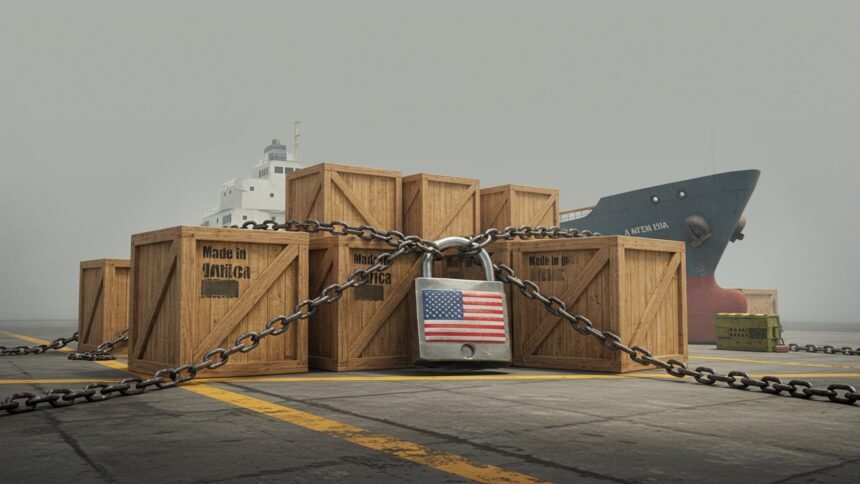Unveiling the Pan-African-American Trade Canvas
In April 2025, the Trump administration unveiled a bold new tariff policy, imposing import duties ranging from 10% to a high of 50% on most African nations, except Burkina Faso and Seychelles. Aimed at narrowing the U.S. trade deficit and bolstering American manufacturing, this move casts a long shadow over the African Growth and Opportunity Act (AGOA). This trade pact has woven economic ties between the U.S. and sub-Saharan Africa since 2000. This article examines the scope, financial repercussions, and political undercurrents of these tariffs, highlighting their impact on African nations and the future of transatlantic relations.
Roots and Rhythms: The Legacy of U.S.-Africa Trade Ties
Since its inception, AGOA has been a lifeline, granting duty-free access to the U.S. market for over 1,800 products from 32 eligible African countries as of 2024. This agreement, renewed in 2015, has fueled growth in sectors such as Kenya’s textile industry, which has skyrocketed from $55 million in exports in 2001 to $603 million in 2022, and South Africa’s automotive sector, with $2 billion in annual exports. Yet, the harmony of this trade rhythm has faltered, with U.S. imports from AGOA nations dipping from $82 billion in 2008 to $29.1 billion in 2024. The April 2025 tariffs, overriding AGOA’s benefits, now threaten to unravel decades of progress, imposing a baseline 10% duty and steeper rates on countries with significant trade surpluses with the U.S.
Mapping the Tariff Terrain: Nations Under the Spotlight
Announced on April 2, 2025, under the International Emergency Economic Powers Act (IEEPA), these tariffs apply to 51 African countries, excluding only Burkina Faso and the Seychelles. A universal 10% duty applies to 29 nations, while 22 others—targeted for trade deficits or perceived barriers—face higher rates. Key examples include:
| Country | Tariff Rate (%) |
| Lesotho | 50 |
| Madagascar | 47 |
| Mauritius | 40 |
| South Africa | 31 |
| Nigeria | 14 |
From Lesotho’s textile hubs to South Africa’s auto plants, these tariffs strike at the heart of export-driven economies, justified by the U.S. as a shield for its workers but criticized as a blunt instrument lacking strategic clarity.
Economic Echoes Across the Savanna and Beyond
The economic toll of the tariffs promises to ripple across Africa’s diverse landscapes. In Lesotho, a 50% duty could silence the hum of textile factories, slashing jobs and export revenues. South Africa’s 31% tariff may dent its $2 billion automotive trade, trimming economic growth by 0.2-0.3 points. Nigeria’s 14% rate, on top of existing woes, risks fueling inflation and weakening its currency, as seen in the central bank’s $200 million naira-stabilizing intervention following the announcement. For debt-laden nations like Ghana and Malawi, losing the edge of AGOA could stifle development. In response, many look to the African Continental Free Trade Area (AfCFTA)—launched in 2018—as a lifeline to bolster intra-African commerce and reduce reliance on the U.S.
Diplomatic Drums: Shifting Alliances and Voices of Resilience
Politically, these tariffs strain the Pan-African-American bond. South Africa’s Trade Minister decries them as “punitive,” pushing for talks with Washington, while Zimbabwe offers tariff concessions for exemptions. Nigeria turns to the World Trade Organization for solutions. Beyond diplomacy, the tariffs may amplify China’s trade dominance in Africa, eroding U.S. influence as aid programs wane. With AGOA’s September 2025 expiration looming, renewal seems improbable under this protectionist tide, nudging African leaders toward AfCFTA and regional self-reliance.
Horizons of Hope: Charting Africa’s Next Trade Odyssey
The U.S. tariffs of April 2025 mark a pivotal shift, challenging African economies with higher export costs and threatening the legacy of AGOA. Yet, in this crucible, opportunities emerge—whether through negotiations to soften the blow, pivoting to Asian markets, or a stronger AfCFTA. As Lesotho, South Africa, Nigeria, and others adapt, their resilience will define the next chapter of Pan-African prosperity and transatlantic ties, proving that even amidst trade tensions, Africa’s spirit endures.










